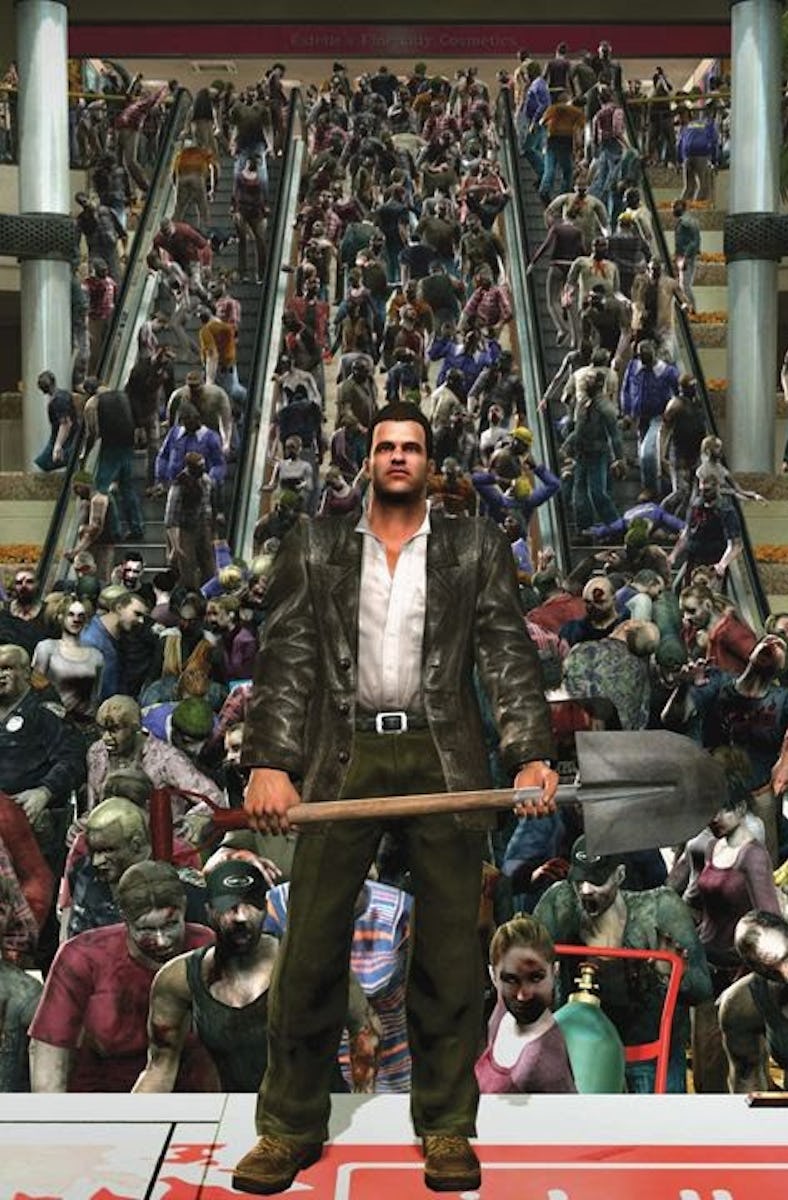18 Years Later, It’s Time For Capcom’s Most Overlooked Series To Make a Comeback
Back from the dead.

Capcom has been on an undeniable hot streak over the last few years, between the overwhelming success of Monster Hunter and the comeback of Resident Evil remakes. Dragon’s Dogma 2 is the latest in a line of wins, already selling 2.5 million copies within two weeks after launch. But more importantly, these wins show there’s demand for games filled with challenging systems that add intentional friction and difficulty. It’s one of the most unique games Capcom has made in years, but it's far from the only series that uses those ideas. It’s long past time that the mall-hopping zombie-slaying Dead Rising makes a comeback.
The first Dead Rising made a big splash when it released in 2006, for a few different reasons. For one it was a brand-new zombie game from the creators of Resident Evil. That alone was huge, but Dead Rising was an utterly fascinating experiment, incredibly ambitious on so many levels. Its tightly designed world took place entirely in a single mall, crammed impressive amounts of zombies on-screen, and embraced an incredibly demanding time-limit system.
The amount of zombies on-screen in 2006 was impressive, but modern technology would allow Capcom to achieve even greater heights.
It’s fair to say there’s still nothing quite like Dead Rising, and the time limit gives it a lot in common with the experience of playing Dragon’s Dogma. Every quest and character in the game adheres to that time limit, forcing you to constantly juggle your tasks, and make split-second decisions about what to prioritize.
At the same time, the mall is filled with dozens of different NPCs, and nearly every one of them can be eliminated by zombies, if you don’t reach them in time. This can even lock off entire side quests or sections of the game, and it’s surprisingly easy to even lock yourself out of finishing the main story. The clock is ticking to complete a story objective do you dare strike out and try to find the survivor that you were told about?
Dead Rising provides a bit more direct guidance than Dragon’s Dogma in terms of objectives, but its systems arguably create even more “friction.” It’s not an overtly horrifying or scary game, but the time limit creates an incredible atmosphere of tension. Everything you do needs to be deliberate and thought out, and the game was built for multiple playthroughs where you memorize the layout of the mall, shortcuts, and timing of events.
Dead Rising’s time-limit was incredibly demanding, but it gave the game a unique sense of palpable tension.
While the sequel, Dead Rising 2, still featured the time limit, future games would move further away from the series’ original identity. This culminated in the last game, Dead Rising 4, a drab game that felt like a shadow of its former self, gripped by generic open world design.
That’s exactly what makes the idea of reimagining Dead Rising feel so tantalizing. Games like Dragon’s Dogma 2, and even Baldur’s Gate 3, have proven that players are hungry for complex stories with real consequences, games that challenge you to make decisions and really put yourself into the experience. Series like Yakuza have also proven how dynamic a single concise location can feel, versus a sprawling open world.
Simultaneously, Capcom appears to be hitting a critical juncture in its design of action and combat. Resident Evil 4 is easily one of the most satisfying third-person shooters out there, refining both the shooting and melee combat. Monster Hunter has flourished in recent years, with a diverse selection of weapons and combat builds.
Dead Rising injected a ton of personality and grim humor through optional “psychopath” bosses.
It feels like right now, specifically, is the perfect meeting point for everything Capcom has learned. A reimagined Dead Rising could draw from the demanding design of Dragon’s Dogma, integrate the action expertise of Resident Evil, and use modern technology to truly realize everything.
It’s honestly astounding how the stars look to have aligned to create this prime opportunity and Capcom would be blind to not take advantage of it, especially as zombie media has only grown in popularity in the wake of The Walking Dead. Complex single-player games are flourishing right now, and it’s high time Dead Rising returns from the grave.